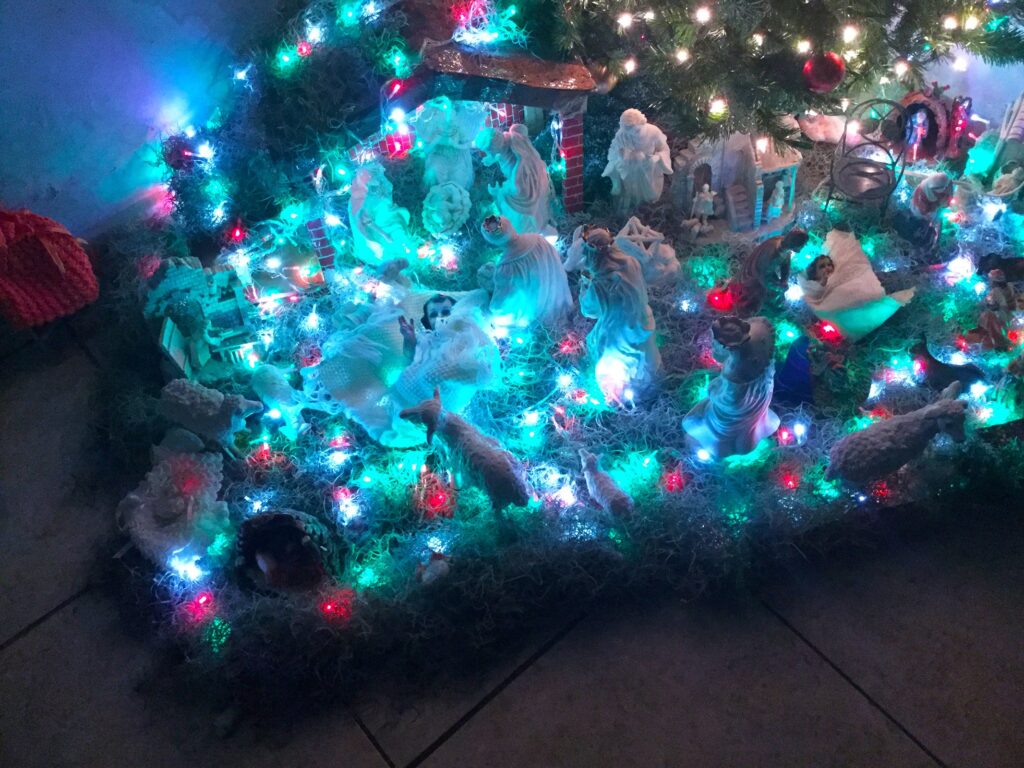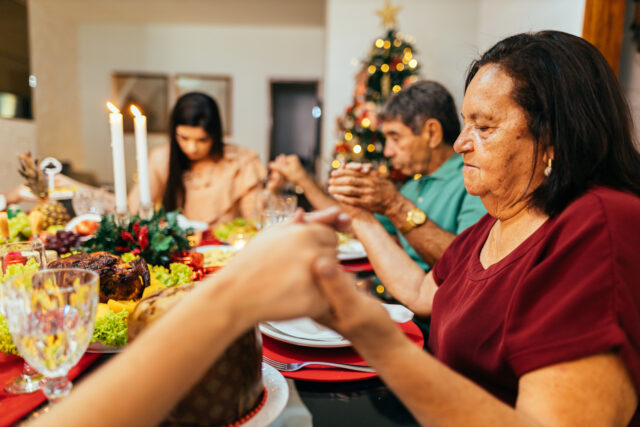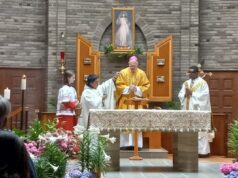NASHVILLE, Tenn. — By now Christmas trees, lights and Santa Claus have taken over homes, streets and cities across the United States.
In the Diocese of Nashville, priests who were born in other countries recalled different traditions of their youth in interviews with the Tennessee Register, the diocesan newspaper.
Father Gervan Menezes grew up in Fortaleza, Brazil, which is in the northeastern part of the heavily Catholic country.
“Brazil being the biggest Catholic country in the world, Christmas is huge there,” said the priest, who is chaplain at University Catholic, the campus ministry outreach at Vanderbilt and Belmont universities.
“Families go to Mass and have celebrations at the house, and they bring in baby Jesus and sing,” he said. “Even those far away from the church would still come and pray together.”
The massive celebrations always happened on Christmas Eve, he said.
“My birthday is the 24th, and I would always get one gift per thing,” he said. “I felt like I always got cheated a little,” he said with a chuckle.
When Father Tien Tran, associate pastor of St. Matthew Church in Franklin, Tennessee, was growing up in Vietnam, churches were the focus of Christmas celebrations rather than the homes of individual families.
“Christmas is not a national holiday,” Father Tran said. “If you choose to be off on December 25th, you don’t get paid for that day. But the people still take off to celebrate, Catholics and non-Catholics alike.”

The Catholics are a minority population, “but a really powerful one,” and they celebrate the season in a big way, Father Tran said. “The bishops and priests are really faithful to the Catholic population.”
The Catholics churches “set up all the lighting decorations and trees leading into the church” weeks before Christmas, he said. “All the people … come and visit the churches” to see “their beautiful decorations. And they build a huge Nativity scene outside, too.”
“At the cathedral, they have a really huge Christmas parade before Christmas Eve, too,” he said. Several churches have living Nativities inside and “all the kids dress up like shepherds and angels. They stand in the manger for the whole of midnight Mass.”
Father Seondo Bang, pastor of the Church of the Korean Martyrs for the Korean Catholic Community in Nashville, said that many traditions in the Daegu Archdiocese in South Korea, where he is from, are similar to those in the U.S., one of the biggest differences is the importance of Mary and obligatory annual confession.
“Decorations (such as lights) around the statue of Mary is one of the most important things,” Father Bang said. “Koreans love holy Mother Mary. The Immaculate Conception (has been) the patron saint of the Catholic Church of Korea since 1831.”
Like in America, Korean Catholics also recognize nine days of prayer, or the Christmas novena, during the final days of Advent, culminating in a celebration which includes gifts from Santa Claus, food and family.
In Mexico, where Catholics make up nearly 80% of the population, most of the celebration happens on Christmas Eve, like Brazil.
First comes Las Posadas, which commemorates the journey of Joseph and Mary from Nazareth to Bethlehem as they sought a safe place to stay for the birth of Jesus. Starting Dec. 16 and going through Christmas Eve, children, dressed as angels, lead a procession, stopping at selected homes to ask for a place to stay.
“The people bring statues of the Holy Family, and we’re singing and asking for lodging for the family,” explained Father Alejandro Godinez, associate pastor of the Sagrado Corazon de Jesus in Nashville.

Before midnight Mass on Christmas Eve, the Mexican community also will pray the rosary and families will choose a “sponsor” for baby Jesus.
“At the end of the rosary, the sponsor takes the baby Jesus and cleans it with perfume, dresses it and sits it in a chair where the baby Jesus stays until Feb. 2,” Father Godinez said. “We do the same on Feb. 2, but this time we undress the baby, put him in pajamas and put him to sleep for the rest of the year.”
For Father Delly Mutajuka, administrator of two Tennessee parishes, Sacred Heart Church in Loretto and St. Joseph Church in St. Joseph, Christmas in Tanzania meant a family reunion.
“Christmas is always a good celebration there, especially as you reunite with your family because you don’t see each other throughout the year because you work in different cities,” Father Mutajuka explained. “Christmas is a time where families come together and celebrate.”
A typical celebration includes attending midnight Mass, so they can sleep in on Christmas Day before preparing a traditional Christmas meal complete with rice, beef, goat meat and greens.
In India, particularly in the southern state of Kerala, where it is believed St. Thomas baptized some of the country’s first Christians, the celebration begins Dec. 1, with everyone attending daily Mass; the children who attend all 25 days receive special gifts after midnight Mass on Christmas Eve.1, according to Fransalian Father Regi Augustine.
The pastor of St. John the Evangelist Church in Lewisburg, Tennessee, said churches organize teams to visit every parishioner’s home over the course of 25 days to sing Christmas carols.
“We go to each house with a statue of infant Jesus, and we receive the families,” he explained. “And the caroling team is accompanied by Santa Claus.”
Catholics in India also abstain from meat, fish and sometimes even eggs during the full 25 days, he said.
“We tell parishioners that the money saved by not eating meat and fish, they should use for charity,” he said. “That is the intention behind it.”
The typical decorations are slightly different too, Father Augustine said. For example, instead of wreaths on the door, Catholic homes in India typically have the Christmas star.
Whatever the cultural or country tradition, they all come back to the true reason for the season: celebrating the birth of Christ.
“If we understand what Christmas is about, that it’s about the birth of Christ, I think that’s what cannot change,” said Father Menezes. “It’s about preparing for Jesus’ second coming … so we must be aware, be prepared, be vigilant.”
Father Mutajuka said the true purpose comes out in “the beauty of the Mass itself on Christmas.”
“The beauty of the liturgy and how reverent it is, it’s the same no matter the place,” he said. “Even though you might not have the same language, the structure is the same and you can still follow along.”
“Christ has come for the salvation for all, and the birth of Christ is the starting point for the culmination at the cross for salvation history,” Father Augustine said.
“Christmas is a time to renew one’s strength in relationships. What happened the last two years with COVID, I think we have slowly lost that feeling that we are one community,” he added.
“This is a time to recommit ourselves to that relationship and bring back and re-establish those things and, as Christians, we need to be aware that Christ is the center of our lives.”
– – –
Peterson is on the staff of the Tennessee Register, newspaper of the Diocese of Nashville.








